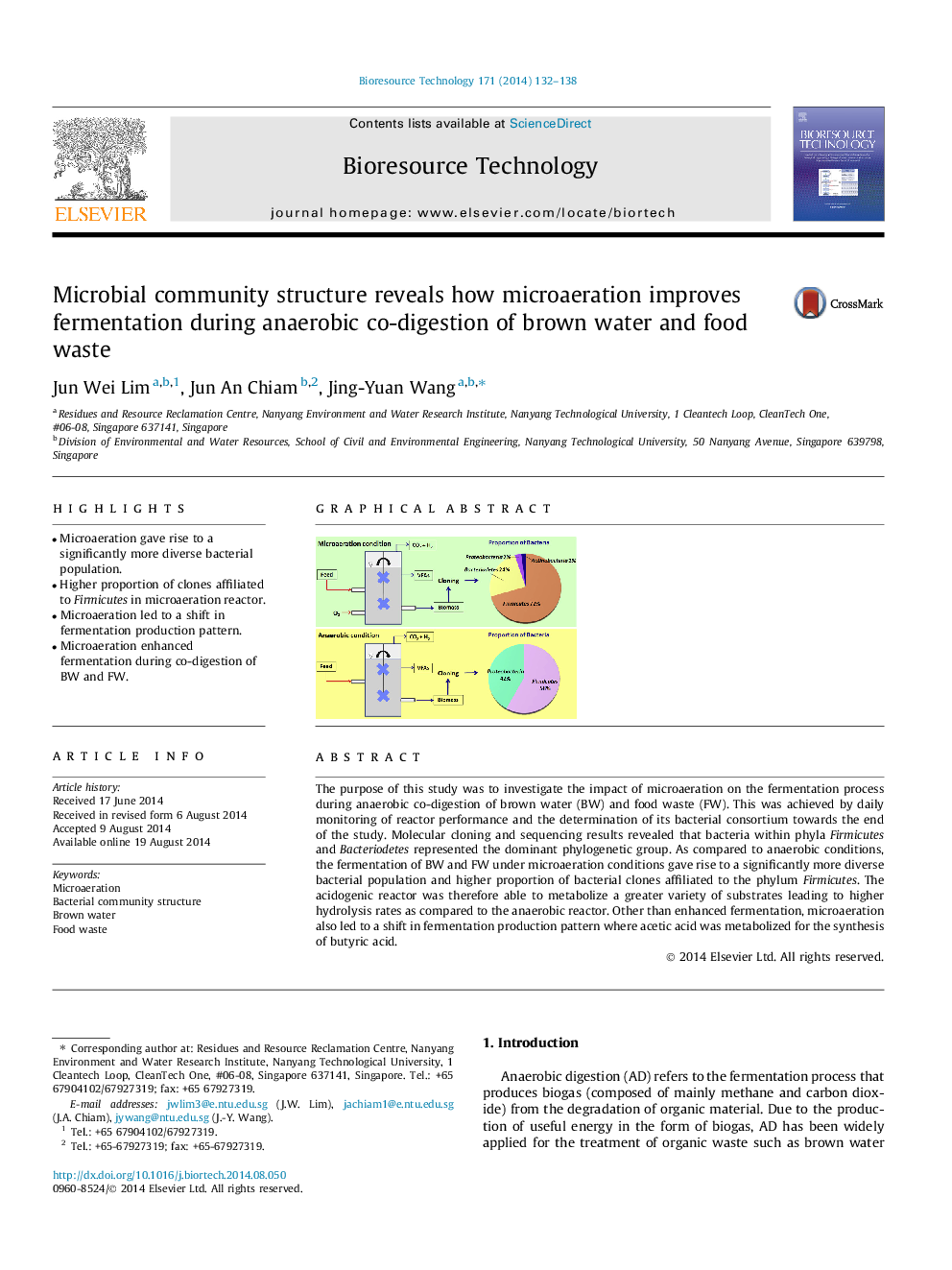| کد مقاله | کد نشریه | سال انتشار | مقاله انگلیسی | نسخه تمام متن |
|---|---|---|---|---|
| 680350 | 1459972 | 2014 | 7 صفحه PDF | دانلود رایگان |
• Microaeration gave rise to a significantly more diverse bacterial population.
• Higher proportion of clones affiliated to Firmicutes in microaeration reactor.
• Microaeration led to a shift in fermentation production pattern.
• Microaeration enhanced fermentation during co-digestion of BW and FW.
The purpose of this study was to investigate the impact of microaeration on the fermentation process during anaerobic co-digestion of brown water (BW) and food waste (FW). This was achieved by daily monitoring of reactor performance and the determination of its bacterial consortium towards the end of the study. Molecular cloning and sequencing results revealed that bacteria within phyla Firmicutes and Bacteriodetes represented the dominant phylogenetic group. As compared to anaerobic conditions, the fermentation of BW and FW under microaeration conditions gave rise to a significantly more diverse bacterial population and higher proportion of bacterial clones affiliated to the phylum Firmicutes. The acidogenic reactor was therefore able to metabolize a greater variety of substrates leading to higher hydrolysis rates as compared to the anaerobic reactor. Other than enhanced fermentation, microaeration also led to a shift in fermentation production pattern where acetic acid was metabolized for the synthesis of butyric acid.
Figure optionsDownload as PowerPoint slide
Journal: Bioresource Technology - Volume 171, November 2014, Pages 132–138
